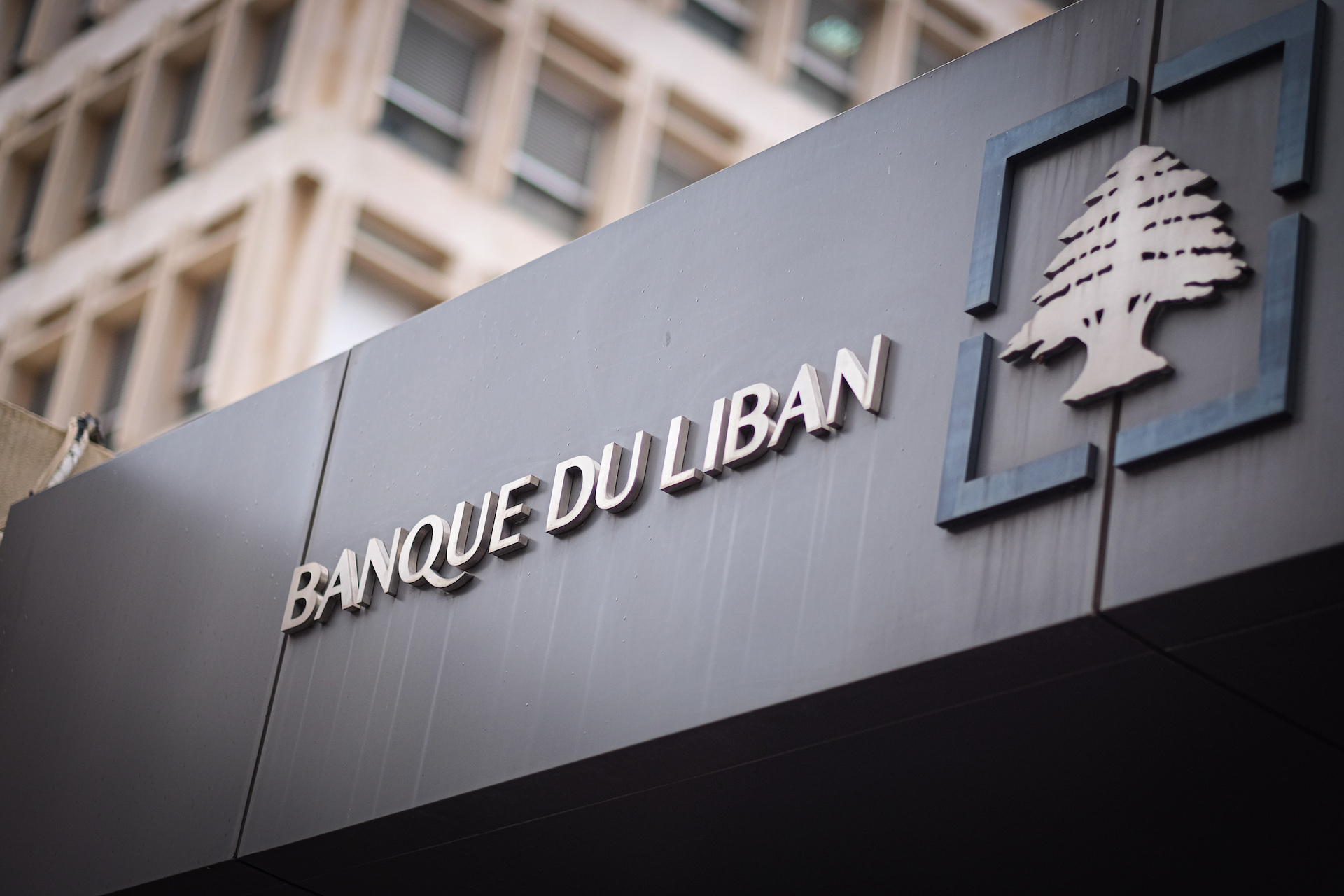
Street art in Beirut, 2016. (Credit: MJ Daoud/L'Orient Today/File photo)
This article is part one of a three-part series. Read part two here and part three here.
2024 has dawned upon us, bringing Lebanon into its fifth year of economic crisis — one of historic, unprecedented magnitude. The last few years have seen the country’s currency decimated, losing more than 98 percent of its value since 2019.
The Lebanese lira was pegged at a rate of LL1,507 to the US dollar from 1997 until October 2019, after which it went into a free-fall depreciation, reaching an all-time low of LL140,000 on the parallel market in 2023.
Since March 2023, however, the lira has not surpassed an LL100,000-to-the-dollar rate, and remains oddly stable today, hovering around LL89,000, despite the outbreak of the war in Gaza and the political uncertainty.
While the International Monetary Fund (IMF) continues to call for a floating exchange rate system, other local and international experts alternatively advocate for full dollarization or its softer version: currency boards to soothe the country’s economic woes.
L’Orient Today spoke to five economic experts to reflect on the legacy of Lebanon’s 22-year-old peg and discuss the contrasting views pertaining to the nation’s future course of action and alternative exchange rate system recommendations.
In this article, we discuss the peg’s legacy.
Another year, another notch on the calendar for Lebanon’s economic downfall of historic proportions.
It’s three crises in one: a sovereign debt crisis, a banking crisis and a currency crisis. Some people blamed the long-time lira peg for at least part of it.
Is it true that the peg is partly to blame for Lebanon’s current woes?
The peg saved Lebanon’s economy … for a while …
In the aftermath of the Taif Accords that marked the end of the Civil War, the Lebanese lira remained unstable, dropping to nearly LL3,000 against the dollar towards the end of 1992. Before the war, a dollar used to be equivalent to 2.3 Lebanese lira.
But it wasn’t until 1997 that the national currency would become officially pegged at LL1,507 to the US dollar.
Jose Aleman, professor of political economy at Fordham University in New York City, explains to L’Orient Today that “pegging a currency has some advantages, especially when a country is wracked by high inflation. It can restore credibility in the national currency, restore investor confidence and bring down inflation.” It is for that reason that countries like Argentina chose to peg their currencies in the 1990s.
 The Banque du Liban headquarters in Beirut. (Credit: João Sousa/L'Orient Today/File photo)
The Banque du Liban headquarters in Beirut. (Credit: João Sousa/L'Orient Today/File photo)
Monetary economist and risk strategist Mohammad Ibrahim Fheili believes it was necessary that Lebanon resort to a peg following the end of the Civil War, to stabilize the economy, restore confidence and attract capital.
“The peg provided a lot of stability and encouraged investments in the country. This was important and it was needed.”
Layal Mansour, a monetary policy expert, believes that the peg actually saved Lebanon for many years. Having become highly dollarized in the 1980s, and having suffered from war, it was impossible to ask a country that was economically and politically unstable to float its currency at the time.
“Under its fixed exchange rate system, Lebanon was supposed to actively work to reduce corruption, decrease its dollarization rate, encourage the use of the Lebanese lira and improve the quality of its financial institutions,” but the country failed to do so, Mansour explains.
… Until it didn’t
There are dangers to this exchange rate system. “If the currency being pegged to — in that case, the US dollar — is much stronger compared to a country’s local currency, there’s a high probability that local products, destined for exports, will be priced out of international markets,” explains Aleman.
And that’s partly what happened with Lebanon.
Imagine a bottle of Lebanese wine. Let’s say one bottle is priced at LL30,000, or $20 with the LL1,507-to-dollar peg in 2018. On the international markets, the bottle will cost $20.
Now, let’s say that the exchange rate at the time was LL5,000 to the dollar instead. The bottle should cost $6 on the international market, (not $20).
And let’s say other international players on the market price their bottles at $10 — they would effectively be more competitive than the Lebanese wine when the peg is at LL1,507, and less competitive when the peg is at LL5,000.
The peg essentially rendered exports too expensive, Fheili says, which created trade imbalances in Lebanon, a country that relies heavily on imports.
Aleman explains that in the long run, as exports become less competitive, domestic markets become flooded with cheap imports (on which they become hooked), and this can lead to the deindustrialization of an economy over the long term.
Indeed, the share of the industrial sector out of Lebanon’s total GDP had decreased steadily from 24 percent in 1997 to just 14 percent in 2016.
Maintaining the peg became too challenging and expensive over time, due to a combination of factors, and namely “the irresponsible conduct of the fiscal authority which accumulated a lot of public debt,” says Fheili.
The economic mismanagement of the ruling political class created a system with an overvalued local currency, a growing fiscal deficit, and significant macroeconomic imbalances.
Fheili believes that the authorities should have let go of the peg and allowed the dollar to float freely earlier in 2009 when it had the chance. He believes we are paying the price for their lack of strategic economic action now.
Nassib Ghobril, chief economist at Byblos Bank, says that while the peg was “a shock absorber and a factor of stability,” it should have been revisited and modified between 2008 and 2010, when Lebanon was experiencing very high growth rates.
“Poor governance and the abuse of political power made the peg unsustainable and very costly,” he adds, also evoking the central bank’s lack of communication and transparency which has cost Lebanon greatly.
Aleman explains that the longer a government holds on to a peg that’s no longer working in its favor, the more suffering it will impose on its local economy once the peg is gone.
This can result in a sudden loss of currency value, wiping away between 50 and 70 percent of people’s dollar savings — a case all too familiar in Lebanon.
Read part two of this series here.